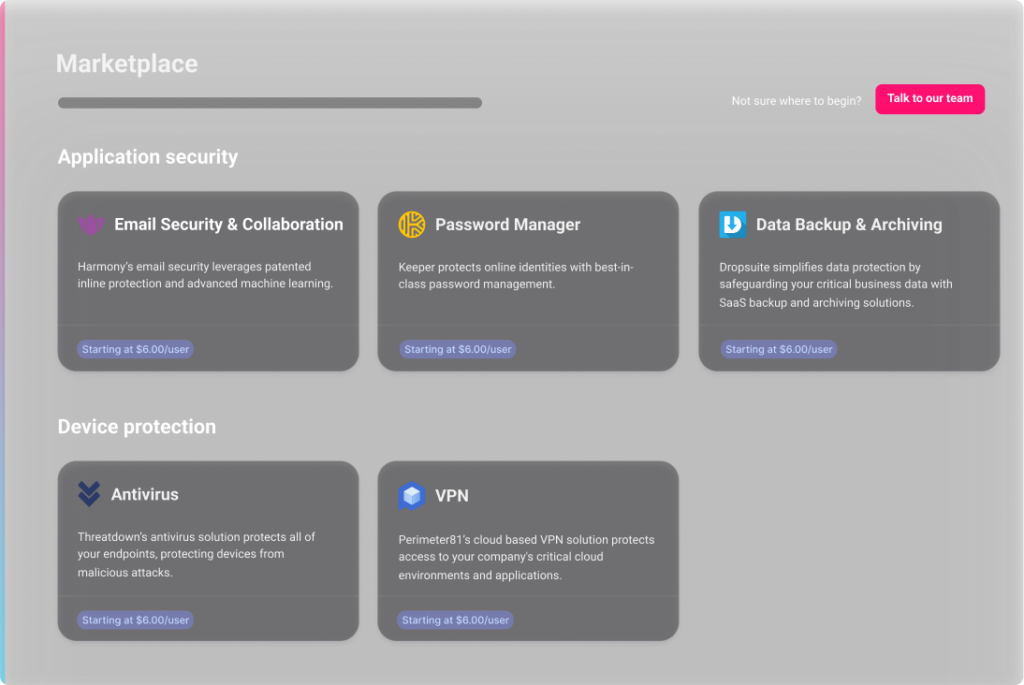How can SMBs combat escalating cyber threats?
Security vulnerabilities are rife among small businesses, making SMBs a leading target for threat actors. Download this white paper to learn:
- The most common gaps in SMB cybersecurity
- The costs and implications of cyber attacks
- How to protect your most valuable assets with a layered approach to cybersecurity
Download The State of Small Business Cybersecurity White Paper
*Required fields. Electric will handle your data pursuant to its Privacy Policy. This site is protected by reCAPTCHA and the Google Privacy Policy and Terms of Service apply.
Cyber attacks are a growing threat for SMBs
47%
of small businesses have fallen victim to cyber attacks
67%
of affected businesses have experienced more than one breach
52%
of breaches are attributed to employee error
Safeguard your business with the Electric IT Hub
Security breaches can occur through multiple channels, and it is critical that your business is prepared for all potential threats. These risks include:
- Phishing emails
- Malware
- Ransomware
- Viruses
- Password guessing
- Software vulnerabilities
- Human error

The Electric IT Hub takes a layered approach to cybersecurity to deliver robust protection.
From developing and implementing cybersecurity policies and training programs, to ensuring device, data, and network security, Electric empowers you to safeguard every aspect of your organization.




